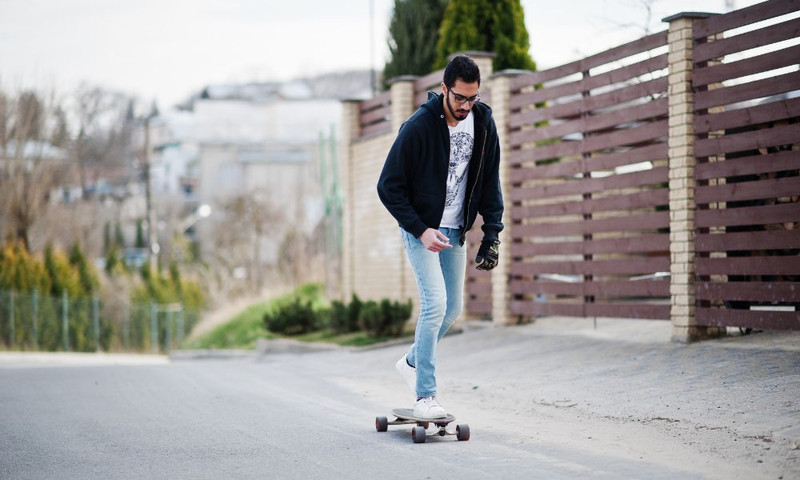Longboarding and snowboarding both involve riding boards. Although you ride the boards in different environments, there are some noticeable similarities between longboarding and snowboarding. Learn more about how they compare here.
How You Stand and the Size of the Board
The stances between the two boards are virtually the same. In both sports, you stand sideways on the board. However, because you're strapped into a snowboard and not on a longboard, you might have to alter how you stand when you go from one board to another. Snowboarding restricts your feet in a fixed stance, forcing them to be at a slight angle. A strapless longboard allows for more flexibility by letting you easily adjust your positioning when dancing, carving, or freestyling.
Each board may have a similar shape, but snowboards are much longer than longboards. Small cruising longboards may only be 28 inches. The prototypical snowboard is between 50 to 68 inches. Even the longest longboard designed for dancing doesn't touch 50 inches. Because a snowboard is longer, the rider must have a wide stance to maintain balance.
Turning and Carving
The techniques when turning and carving almost entirely resemble each other. You must shift your weight from front to back and between your toes to effectively turn and carve on both boards. The only thing that differs between the two is how each one feels. Since you strap into the snowboard, you can put more weight on the rail without stumbling.
You can only place so much weight on a longboard’s rail before you lose your balance. Furthermore, a longboard needs all four wheels to touch the ground when turning or carving, except when you slide. A sharp turn on a snowboard has a different impression than a longboard with wheels.
It's Tricky
Both boards let you do tricks, even if they’re vastly different. Most longboarding tricks deal with manuals, kickflips, and ollies. Many longboarders also love to dance in the streets, which isn’t possible on a snowboard. Snowboarders are all about big air, nose grabs, and 360 spins in a halfpipe.
Going Downhill
Downhill riding on a longboard is comparable to snowboarding, other than strapping yourself in. A strapped snowboarder feels more secure at higher speeds compared to a longboarder. Another form of security is falling in the snow; the snow can be softer than the pavement. Still, you must be careful on either board to avoid injuries when going downhill. While nothing keeps longboarders attached to their boards, downhill decks often include foot pockets that aid the rider's composure when approaching higher speeds.
There are several similarities between longboarding and snowboarding, but each similarity breaks off into slight differences that make each activity unique. The odds are that if you enjoy one of these activities, you'll enjoy the other. If you’re an avid longboarder, you can get a new Sector 9 complete longboard at The Longboard Store. The Longboard Store has several longboards that accommodate multiple styles. And if you need to find out what style suits you, you can take our short quiz to narrow your search.

